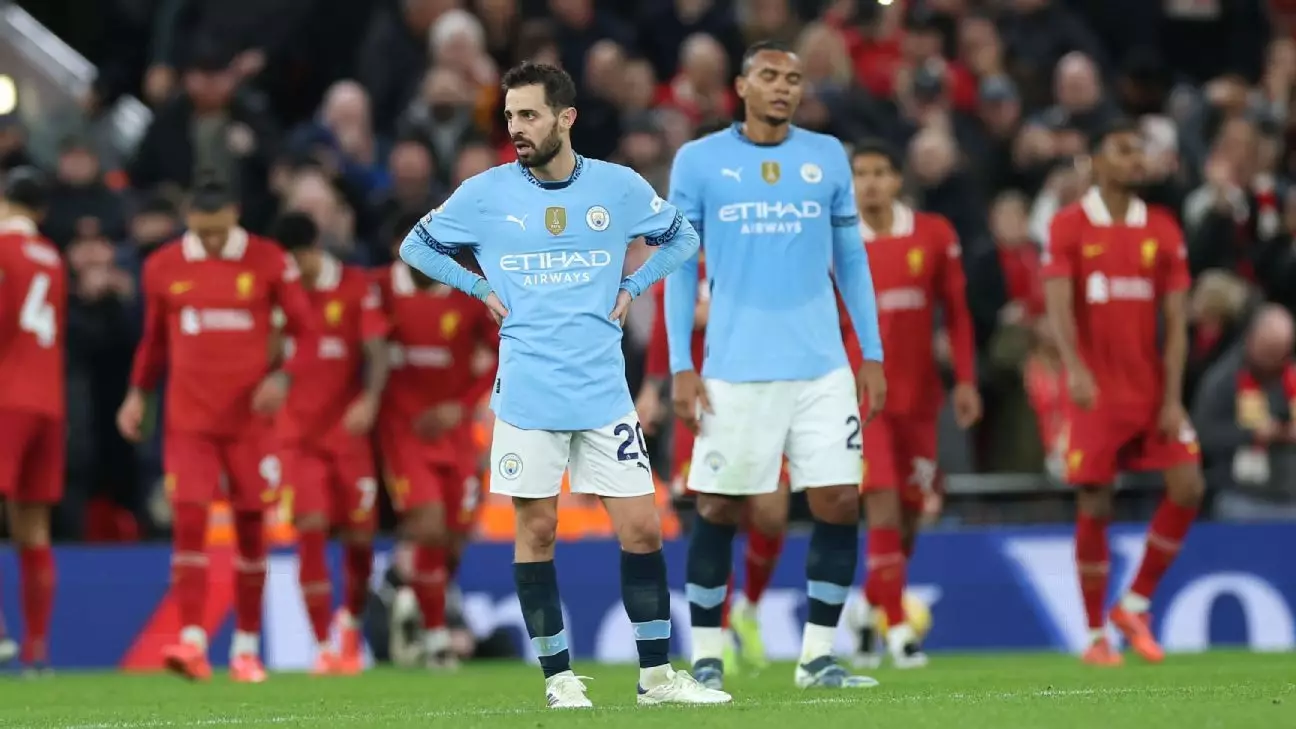In the world of football, prowess is often cyclical, and even the mightiest teams can find themselves teetering on the brink of decline. Manchester City, once the dominant force in English football, is beginning to face its reality. This shift, while gradual, is unmistakable. Much like the downfalls of storied clubs like Manchester United and Liverpool, City appears to be grappling with the convoluted dynamics that herald the end of a successful era. The question remains: is it too late for City to reclaim its former glory, or are the seeds of decline already firmly planted?
The allure of past triumphs often creates a dangerous sense of security. After Sir Alex Ferguson’s retirement in 2013, Manchester United fell victim to a similar delusion; supporters believed that the dynasty forged during his tenure could seamlessly transition into a new era. Unfortunately, more than a decade later, United finds itself languishing, struggling to regain a semblance of its former status. Liverpool, too, was caught in this trap during the 1990s, mistakenly holding onto past achievements that seemed to promise an easier route back to success. Their 30-year title drought serves as a somber reminder of how quickly fortunes can shift in football.
City’s recent match against Liverpool epitomizes this unsettling transformation. Losing 2-0 at Anfield marked City’s sixth defeat in just seven matches, an alarming statistic for a club basking in the afterglow of winning six league titles in seven years. This defeat is not merely a bump in the road; it reveals deeper issues that threaten to unravel the club’s recent success.
The deterioration of City’s team cannot be pinned on a singular factor. There are glaring problems with age and recruitment plaguing the squad. Shining examples of decline can be seen in pivotal players like Ilkay Gündoğan, Nathan Aké, and Kyle Walker. Despite their contributions in the past, they now seem to struggle to keep pace with the modern game. Furthermore, crucial signings have not materialized into the stars that City anticipated. Matheus Nunes and Manuel Akanji, for instance, have failed to showcase the potential expected of them, contributing to a sense of stagnation within the squad.
One of the most glaring mistakes has been the retention of aging players without adequate plans for their succession. The club’s decision to re-sign Gündoğan, despite his advancing age and a year spent in a less demanding league, seemingly contradicts the club’s previous emphasis on youthful dynamism and adaptability. Instead, City’s midfield became painfully exposed during their recent fixtures.
What is increasingly apparent is the gradual impact of poor recruitment practices on the team’s performance. Manchester City appeared to lose its instinct for identifying and nurturing young talent. By allowing promising players like Cole Palmer and Julián Álvarez to depart, the club has inadvertently undermined its potential to cultivate a new generation capable of sustaining its winning legacy. The decisions to part ways with established talents such as Raheem Sterling, Gabriel Jesus, and Riyad Mahrez are indicative of a disjointed approach to squad management.
As City stumbles through its current winless streak, other teams are no longer intimidated. Once revered for its tactical sophistication and relentless energy, City faces opponents emboldened by the prospect of outpacing them. The slipshod performances against teams such as Bournemouth and Feyenoord are stark reminders that they are no longer invulnerable.
Learning from History
Reflecting on the histories of Manchester United and Liverpool unveils valuable insights. Both clubs, once giants, experienced their falls from grace due to a mix of poor management decisions, neglecting the younger talent coming through, and an inability to modernize their playing style. The failures of United in the post-Ferguson era underscore the dangers of complacency. Just as Liverpool neglected their squad’s evolution in the 1990s, City now stands at the crossroads, requiring decisive action to avoid a similar fate.
Indeed, historical patterns suggest that if City does not adapt quickly—reassessing its recruitment strategy and nurturing young talent—the current decline may extend into a lengthy period of mediocrity, akin to what was witnessed in the last decades of the 20th century at Liverpool.
The impending era at Manchester City does not have to result in a fall from grace, but it necessitates a comprehensive strategy to reinvigorate and refresh the squad. Recognizing the threats posed by aging players, realigning recruitment strategies to focus on youth and vigor, and ensuring that strong leadership under Pep Guardiola remains steadfast will be essential. Building a bridge between past successes and future ambitions is crucial; otherwise, City may find itself lost in an abyss of forgotten glory. The clock is ticking, and what remains is the question of whether Manchester City can reverse its fortunes or if they are destined to become another tale of a once-great club fading into memory.

Leave a Reply